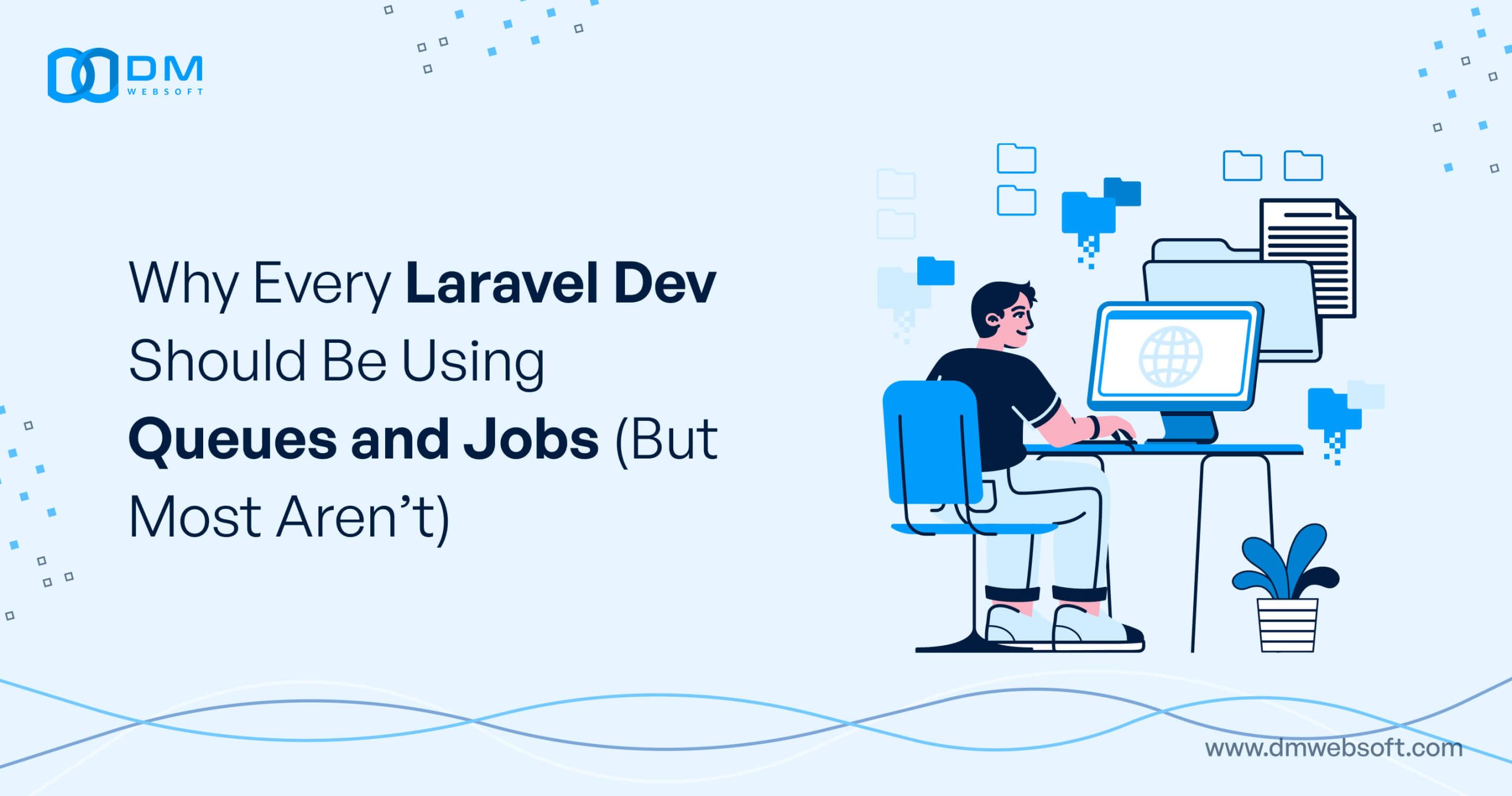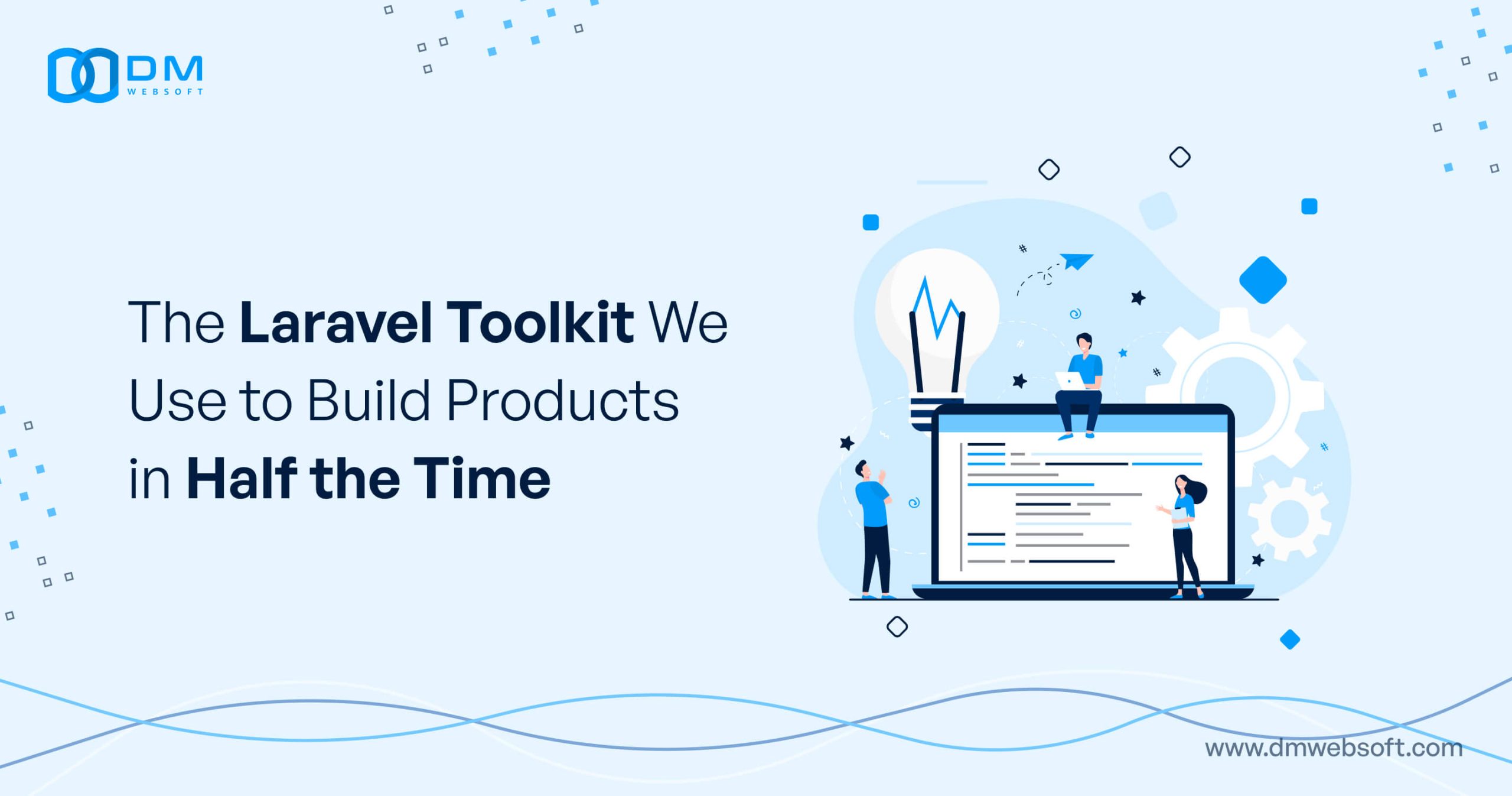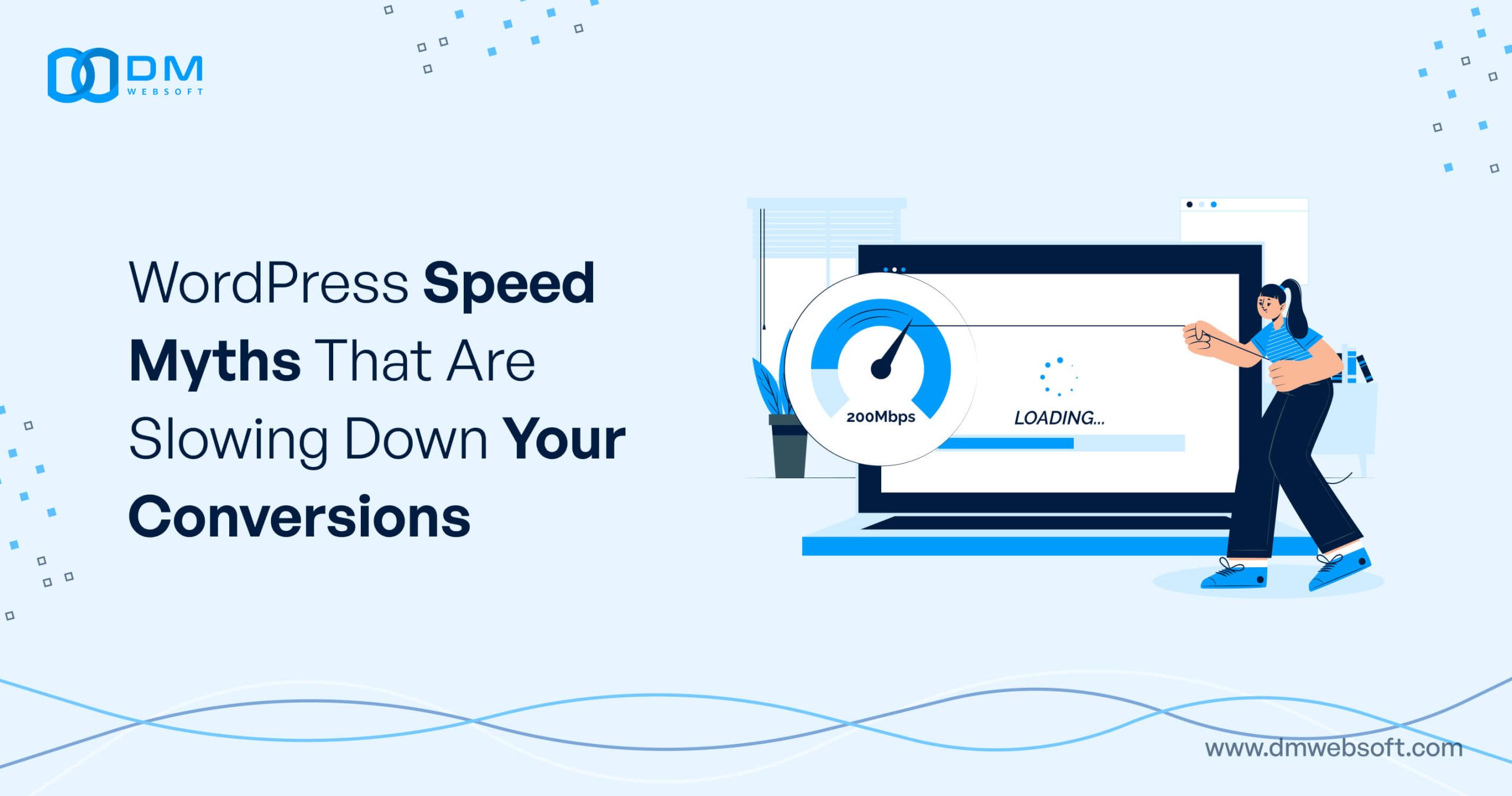DM WebSoft LLP exceeded our expectations! Their seasoned team of experts delivered a website that perfectly captures our brand essence. Their 15+ years of experience truly shine through in their exceptional web development skills.
Server-Side Rendering (SSR) vs. Client-Side Rendering (CSR): When to Use Each

TABLE OF CONTENT
Get in Touch
Introduction
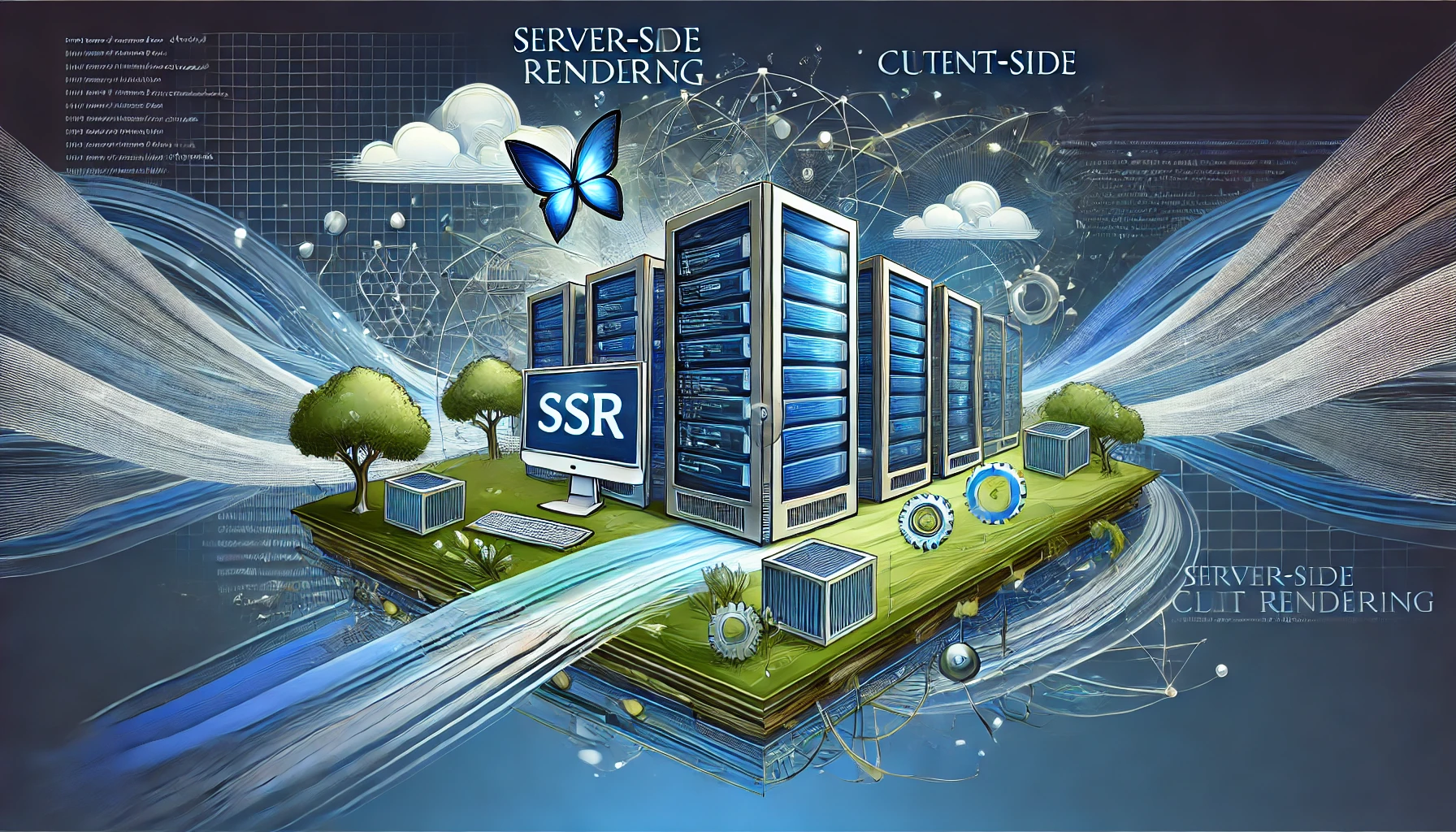
There are various types of rendering strategies when it comes to web development, but definitely making the right pick will ensure that the user experience is at its optimum, hence affecting search engine rankings. SSR and CSR are two major types of approaches used in rendering web pages. However, knowing when and where to use these technologies and understanding the differences might affect your website performance, search engine visibility, and user satisfaction.
Server-Side Rendering is a process by which the full HTML content is rendered on the server side before it is sent to the client’s browser. The big advantage of this approach is that it will be easily indexed by search engines since they can easily crawl all the fully rendered HTML to easily index it for good visibility. Client-Side Rendering, on the other hand, is where HTML is generated on the browser, thus remaining dynamic and interactive. This kind is capable of updating without a page load.
You need to make a choice between SSR and CSR, taking into consideration factors such as application complexity, performance requirements, and SEO objectives. While SSR brings the benefit of a faster initial load and improves SEO, CSR will allow the rich interactions to become truly engaging because there is no reloading of the page. So it indeed makes sense to know both sides of this coin before making reasonable decisions.
This is one place where DM WebSoft LLP performs well: helping businesses navigate such technological choices in developing robust and efficient web applications. Our able team knows how to use the latest rendering technologies in customizing the solution at your peculiar business need. Our experience allows us to guide you in the right direction: from server-side rendering to make your site optimized for search engines, to client-side rendering, amplifying user engagement.
In this blog post, we deep dive into the specifics of SSR and CSR, their pros and cons, and use cases. And last but not the least, you will also get to know very clearly which one is the best strategy for rendering in your project for making it work and growing your business. Let’s find out the differences between Server-Side Rendering.
What is Server-Side Rendering (SSR)?
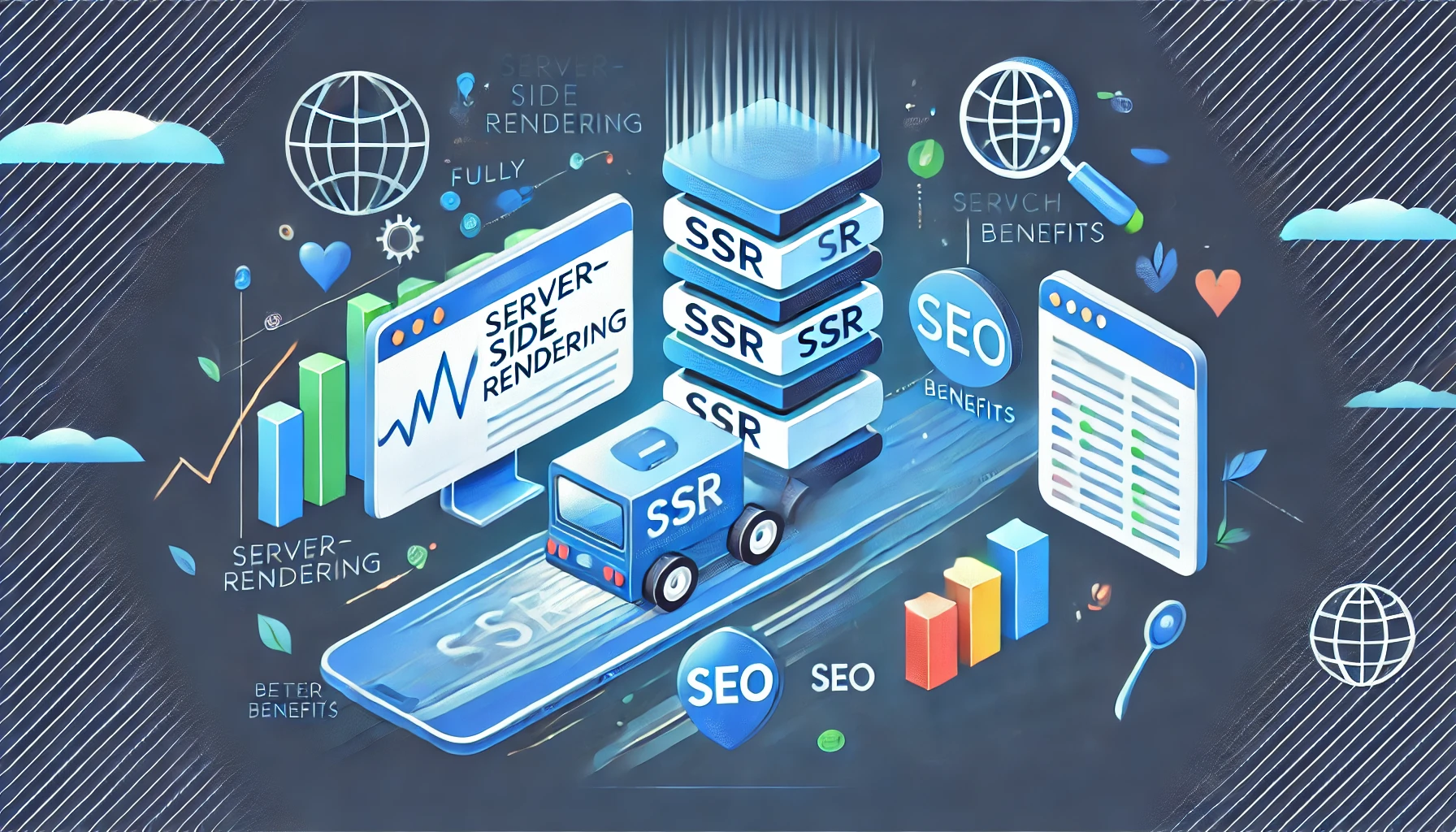
Server-Side Rendering (SSR) describes the state of web development in which the server generates the final HTML content of a page before passing it on to the client’s browser. Such an approach means that users get served a completely rendered page, which at least helps in fast initial loading and boosts SEO. With SSR, most of the processing is done by the server, and it allows the user to have a seamless experience, especially on content-heavy sites.
- How SSR Works: As soon as the user requests a web page: The server processes the request, runs all the necessary code, and returns the whole document of an HTML file. It is then rendered in the user’s browser, which makes it easy for search engines to crawl and index the content. SSR is particularly beneficial for sites oriented towards SEO because it gives search engines full visibility into the page content.
- Benefits of SSR for Better SEO Visibility: There are many reasons why SSR provides better SEO visibility, but the first one is the rendering of HTML in the server itself. Search engines easily manage to index the pages. This is important for any company that wants to build its online stature and gain organic traffic.
- Quick Initial Load Times: Since SSR involves a complete page being delivered, the wait times before views are presented are greatly reduced. This considerably reduces the load on the client side, which goes well with users on poor internet connections.
- Consistent Performance Across Devices: This method of SSR ensures that the user experience is uniform on all devices and all kinds of browsers, since the server does all the heavy lifting for rendering pages. Such consistency is needed to help businesses represent themselves in an endeavor to reach a larger number of audiences with ease.
Disadvantages of SSR
- Increased Server Load: The server is rendering the entire page, so obviously this will bring in a bit more server load, especially when the visitors are at their peak. This may require businesses to have more robust server infrastructure, which might come with a cost.
- Complexity in Implementation: SSR can be relatively complex in its implementation, though it remains relatively more straightforward compared to other rendering techniques, especially for dynamic web applications. Developers may require a few more add-ons or tools and, obviously, some frameworks to facilitate the integration.
- Delayed Interaction: While SSR proves to be a boost to initial loading time, it can possibly delay interactive components on the page until the whole HTML is parsed, which could be bad for user experience, especially for those applications in which fast updating and interaction are required.
At DM WebSoft LLP, we understand Server-Side Rendering thoroughly and how to leverage all of its benefits into making a web development project succeed. Our expert team will help you leverage the power of SSR to boost your website’s performance and SEO to ensure that your business remains at the top of SERPs in this highly competitive digital landscape. Whether you are developing a new application or optimizing an old one, we can help customize solutions to be effective.
In the section below, we provide further information about Client-Side Rendering (CSR), as an alternative approach that has its benefits and challenges. It’s essential to know both rendering processes so that you, in the end, make good decisions that meet your business objectives and most importantly, your users’ needs.
What is CSR?

Client-Side Rendering (CSR) is a web development approach where HTML content is generated by the browser at runtime. In the given approach, the server sends a minimal HTML page with JavaScript files to the client, and then the client executes that JavaScript in order to render the content of the page. CSR is one of the most common practices in modern web applications because it allows the development of dynamic and interactive user experiences.
How it Works
Whenever any user accesses a page that uses Client-Side Rendering, the server sends a template of plain HTML with JavaScript files that contain logic for rendering the contents on the specific page. The browser processes these files by sending other required data, where necessary, and then builds the end HTML that it presents to the user. This creates automatic transitions and updates within the application without reloading an entire new page.
Pros of CSR
- Improved User Interaction: A significant advantage of CSR is that it offers a rich and improved level of interaction between the user and a web application. By updating content dynamically with JavaScript, CSR makes it almost real-time for applications to respond when users take action, providing fluid user experiences.
- Reduced Server Load: Rendering is shifted to the browser in CSR, which reduces the work that is done by the server. This may save potential money on server infrastructure, and scaling can be improved with CSR on applications used by many people.
- Dynamic Updates to the Content: CSR is excellent at providing dynamic content, which constantly changes without causing the full page to reload. It works best with single-page applications, where users expect to see real-time updates and interactions without incurring a page reload.
Disadvantages of CSR:
- Slower initial loading time: Because the browser has to download and execute JS files before it can render content, CSR may lead to slower initial loading times than SSR does. This time lag can create a significant impact on users experiencing the site, particularly those with slower internet speeds.
- SEO Challenges: CSR comes with its share of challenges for SEO, as the search engine might find it quite challenging to crawl JavaScript-driven web pages. Although search engines can index JavaScript-powered content, the major concern here is optimal SEO. It will require planned implementation with utmost care in order to produce excellent results.
- Complexity in Debugging: The nature of CSR applications is such that they become complex for debugging because of their presentation mode using JavaScript. The developer has to make sure each and every client-side script works fine with different browsers and devices.
At DM WebSoft LLP, we clearly see the power of Client-Side Rendering in making sure that user experience is transformed and driving in engagement. Our team of advanced and professional experts can work with you to leverage CSR in order to develop innovative web applications that captivate your audience and realize your business goals. Our solutions, whether building a new application from scratch or extending an existing one, are tailor-made for max CSR benefits and to stand its challenges head on.
Compare the Server-Side Rendering approach to the Client-Side Rendering approach and mention the differences while delving deep into the areas where each of them fits best. This knowledge will empower you to make better decisions about which rendering strategy aligns with the goals of your project.
SSR vs. CSR: Main differences between the two
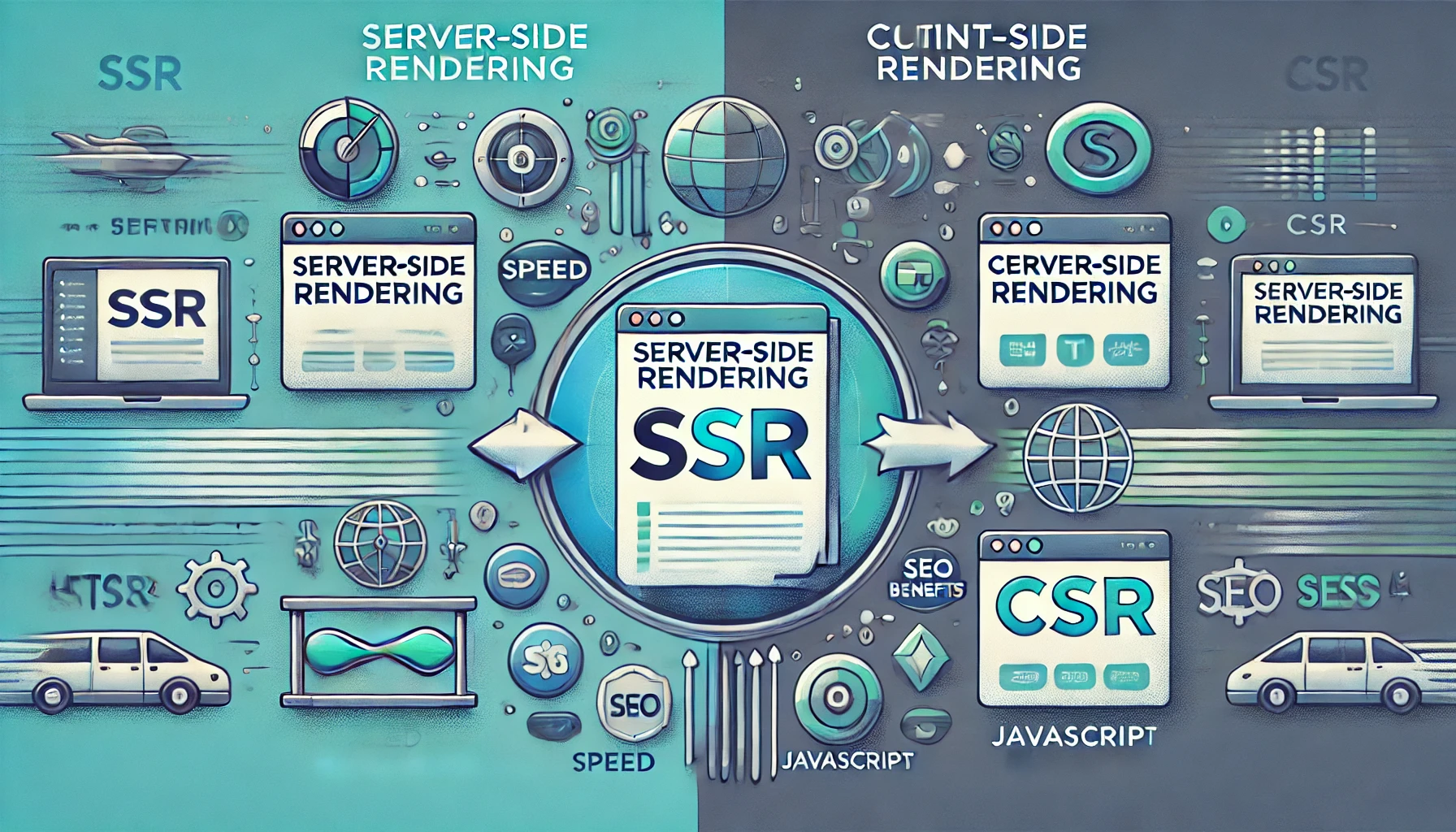
Choices with respect to server-side rendering and client-side rendering, one needs to make very important decisions when looking for performance, user experience, or SEO optimization. These different approaches have their advantages as well as challenges. So, there’s a need to understand what these differences are before deciding which one best serves your project mission.
Performance and Scalability
SSR is known to provide faster initial load times, as the server sends fully rendered HTML to the client’s browser. This will be particularly helpful with people having slow internet connections or low processing power, as the heavy work will be done in the server. In contrast, CSR relies on the browser to render content dynamically using JavaScript, which can lead to slower initial load times. However, CSR excels after the initial load is complete, with updates and transitions that can take place without full-page reloads.
On the issue of scalability, CSR can be cost-effective since it lessens the server load and thereby enables it to offload rendering tasks to the client’s device. This can be advantageous for applications with a large user base, allowing businesses to scale efficiently without significantly increasing server infrastructure.
SEO Considerations
SEO is a crucial element for companies trying to increase their online presence and attract organic traffic to their website. SSR offers numerous SEO advantages due to the enhanced indexing capacities of search engines on fully rendered HTML pages. This may significantly increase your search engine rankings and hence enhance your online visibility as well. On the other hand, CSR results in SEO-related problems because search engines have limited indexing capabilities for JavaScript-heavily-built sites. Although modern search engines have developed the ability to crawl CSR applications, getting the optimal SEO still requires careful implementation and testing.
User Experience
Another great focus is user experience. A CSR application is well-suited to applications with constant updates and interactions, like social media platforms, e-commerce sites, and dashboards. With this, CSR can be said to enable dynamic updates without a page reloading, being really fast and engaging for users. On the other hand, SSR is good for those sites which are content-heavy and need speed in their initial loading time, while SEO is important. Fully rendered pages in SSR give users content on any device and any connection speed.
Degree of Development Complexity
It has quite some complexity in the implementation of SSR and CSR, based on the specific requirements that define a project. This complexity can mainly be difficult to implement for dynamic web applications because it needs more logic and infrastructure on the server side.
Modern frameworks like Next.js and Nuxt.js have actually made that more accessible by surfacing tools and libraries that streamline the whole development process. CSR is also somewhat easier to implement and work with, especially for developers who are already accustomed to or have a history working with client-side JavaScript frameworks such as React, Angular, and Vue. These come with great tools and libraries that allow very dynamic applications to be created with minimal dependence on the server.
Conclusion
There is a multitude of reasons you would prefer one over the other between Server-Side Rendering and Client-Side Rendering, such as performance, SEO, user experience, and development complexity. An awareness of the strengths and weaknesses of each approach will enable effective decision-making with regard to business objectives and user needs.
At DM WebSoft LLP, we are committed to helping you walk these choices and implement the best rendering strategy in your web development projects. Our experts guide you in such a way that your application will be fine-tuned for performance, scalability, and SEO. Whether you’re considering increasing functionality of an existing website or developing a new application, our solution will be made in accordance with your personal unique needs and goals.
Next, in the following section, we will examine factors that influence this choice between SSR and CSR and thereby provide input for how to go about making the choice of the rendering approach that would serve your project best.
Factors Influencing Choice of SSR over CSR
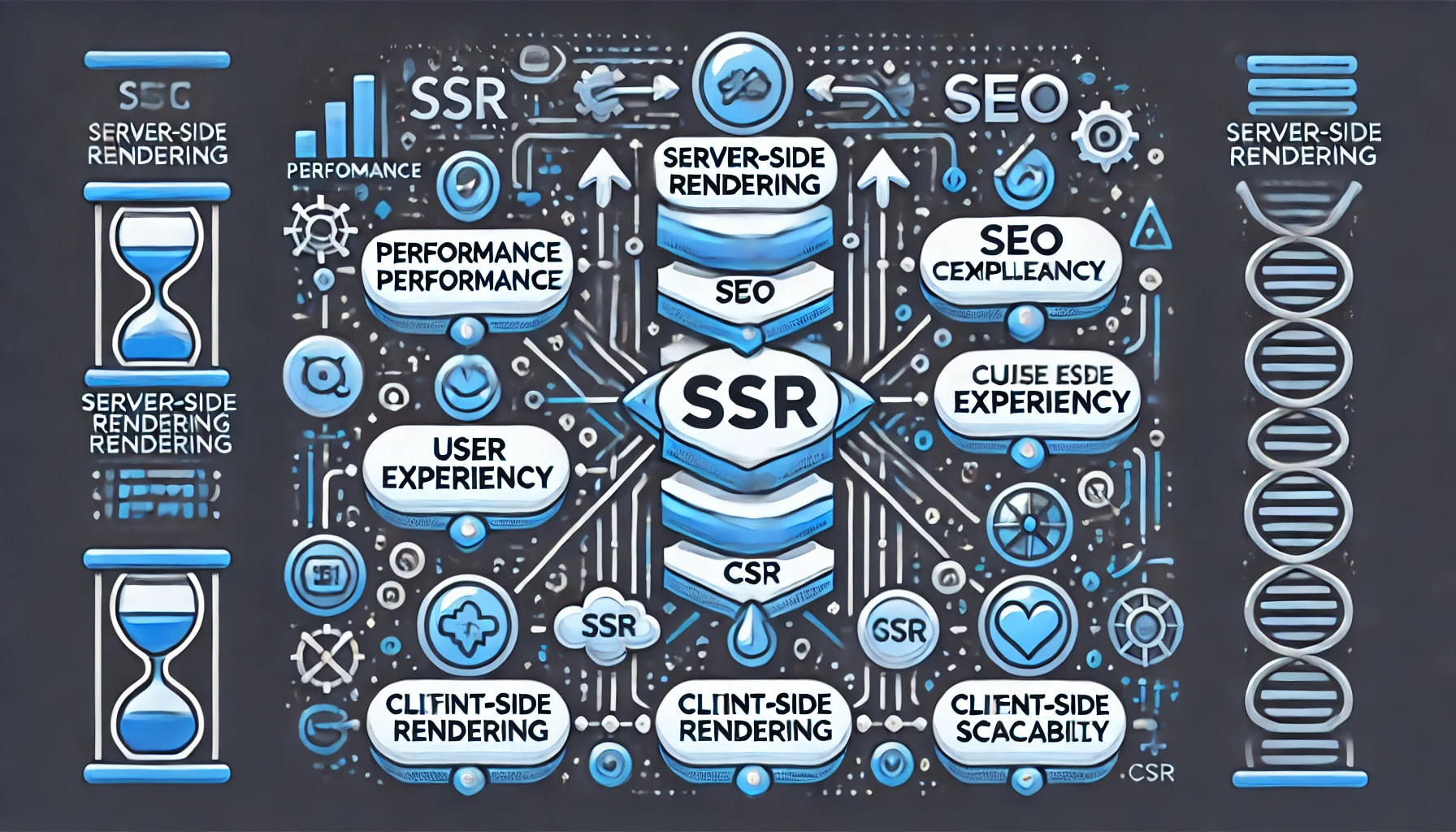
Choosing the right rendering strategy for any web application is a strategic decision and has to be taken based on a number of factors. Knowing this, businesses and developers can make the right decision, which consequently will lead them toward their goals while at the same time meeting the needs of the users. In this regard, let’s now consider the factors that significantly influence the choice of Server-Side Rendering (SSR) over Client-Side Rendering (CSR).
Performance Requirements
Performance is a key consideration in determining the appropriate rendering strategy. SSR is particularly useful for websites with performance requirements for fast initial loading. The client’s browser receives fully rendered HTML. Not least, this is very important for content-heavy websites and platforms where users are expecting immediate access to data. On the other hand, applications that need to update and interact very often can benefit from CSR, where it doesn’t reload the whole page with every user’s interaction; instead, it updates it without a full page reload. Think about your application’s performance needs when picking one between SSR and CSR.
SEO Considerations
For businesses intending to increase visibility online, then SEO is another critical factor to consider in selecting a rendering strategy. Server-Side Rendering greatly enhances search engine optimization, which can be attributed to the fact that it serves fully rendered HTML pages that can easily be crawled and indexed by search engines. This is quite imperative for a site that wants to leverage organic search traffic and rank well in the search result listings. Though most modern search engines have improved their capability of indexing the content made with JavaScript, best SEO results with Client-Side Rendering require careful implementation, which may involve additional tools or techniques.
User Experience and Interaction
User experience is another pivotal factor. Almost second to none in creating real interactive applications with in-line transitions and real-time updates, CSR is in great demand for SPAs and platforms with a great deal of interaction. On the other hand, SSR is better for a coherent experience on all devices and browsers because it delivers fully rendered pages. It’s a good choice for applications in which speed at first load and availability of content are utmost priorities.
Development Complexity
The implementation between server-side rendering and client-side rendering is complex based on requirements for your project. Server-Side Rendering is more complicated to set up compared to Client-Side Rendering, mainly because of the additional server-side logic and infrastructure necessary—especially for dynamic applications.
However, many modern frameworks, such as Next.js and Nuxt.js, have made developing SSR applications relatively easy by providing tools and libraries that streamline the implementation process. Usually, it is easier to implement Client-Side Rendering, especially for developers already using JavaScript frameworks like React, Angular, and Vue. They provide good tools for interactive applications while keeping server-side dependencies to a minimum.
Scalability and Cost
The scaling up capability and cost factors are major concerns in opting for a rendering strategy. CSR can be more cost-effective due to a reduced load on the server by processing a task at the client’s end. This actually allows businesses to scale themselves economically with proper investments in server infrastructures. It is for this reason that CSR really stands out as an option in applications with an immense number of users. SSR could potentially demand more robust server infrastructures, and especially at the peak traffic times, this means it may actually affect cost.
Conclusion
In conclusion, the choice between Server-Side Rendering and Client-Side Rendering should be derived only after due considerations of performance, SEO, user experience, development complexity, scalability, and cost. These are unique challenges and opportunities, respectively, which help understand how to make informed decisions in line with the business objectives and user needs for each of these different approaches.
At DM WebSoft LLP, we promise to help you through this maze of choices and walk through implementing the best rendering strategy for your web development projects. Walk you through the process with our experienced team ensuring that application is optimized for performance, scalability, and SEO. Whether you need enhancement of your existing website or a brand new application built from scratch, we provide bespoke solutions according to your needs and objectives.
We will next delve into the latest market trends and insights into rendering technologies to make sense of the landscape as it applies to your choice on a means of best serving SSR and CSR.
Choose the Right Rendering Approach for Your Project
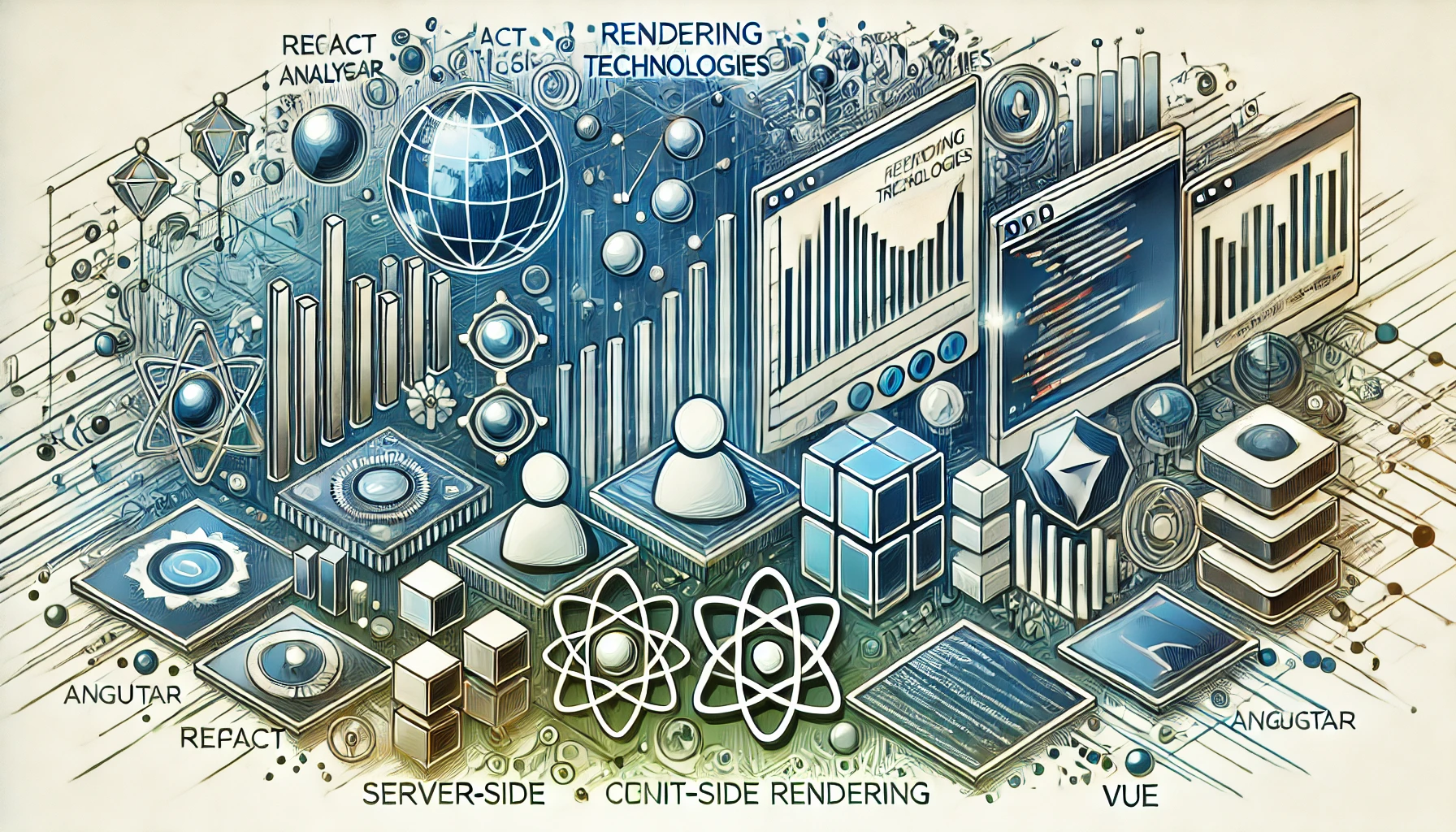
The right approach to rendering your web application is an important factor in achieving high performance, user experience, and SEO. Whether you opt for Server-Side Rendering or Client-Side Rendering, it’s a call you make with due consideration and careful evaluation of your needs and goals. The following is a step-by-step guide in helping you pick the best rendering approach for your project:
Step 1: Define Your Goals and Priorities: Very clearly define your project’s goals and priorities. Think about what you’re trying to do with your web application and the key aspects. Do you care most about SEO and first loads, or are you more concerned with creating an extremely interactive user experience? Getting to know your objectives can assist you in determining whether SSR or CSR is most suitable for your project.
Step 2: Evaluate Performance and Scalability Needs: Evaluate the performance and scalability needs of your application. SSR ideally works best with applications having fast initial load times and helps in boosting SEO, making it perfect for content-heavy websites and platforms. On the other hand, CSR is good at providing a dynamic and interactive experience, so it’s preferable to use it for applications in which updates and interactions are needed on a regular basis. Consider the scalability needs of your application: CSR can be more cost-effective with a large number of users, as it reduces server load.
Step 3: SEO Requirements: Consider SEO requirements for your project. With the ability to provide fully rendered HTML that search engines can crawl and index easily, Server-Side Rendering offers important SEO benefits. So, if it is all about SEO, then this is more likely to be the better choice for your application. Even though CSR can also perform well with SEO results, it must be implemented carefully and testing has to be done just to be sure that all the content is accessible for the search engines.
Step 4: User Experience Expectations of the App: Consider the user experience expectations for your targeted users. CSR fits well with applications that expect frictionless, real-time updates of information being displayed; that’s why it has found a home in SPAs and platforms focusing on user engagement. SSR, on the other hand, ensures a consistent user experience on different devices and browsers and is most effective for applications that need to be focused on speed and content accessibility.
Step 5: Consider Development Complexity and Resources: Evaluate how complex the development is going to be and what kind of resources you have available. However, implementing SSR can be quite complex when dealing with dynamic apps because further server-side logic and infrastructure will be required to support it. However, modern frameworks such as Next.js and Nuxt.js have made the process easy. It should be generally easier to do CSR if you are a developer who is used to working with JavaScript frameworks like React, Angular, or Vue.
Step 6: Test and Iterate: Finally, consider testing both approaches to determine which one best meets your project’s requirements. Testing, SEO audit, and user experience in order to derive these insights for decision making—always be ready to iterate and refine the approach based on results and feedback received.
Conclusion
Choosing the right strategy for web application rendering is a strategic decision that should be thought through in relation to the goals of your project, performance needs, SEO requirements, user experience expectations, and available resources for development. The following step-by-step guide will help you make a smart choice based on unique project requirements and goals.
At DM WebSoft LLP, we ensure that complex rendering technology becomes one navigated aspect for our clients to have the best strategy possible for their web development projects. Our experts will drive the process so that your application meets the best performance, scalability, and SEO standards.
Whether you are looking for application enhancement or a new development one, we come up with solutions having custom approaches to meet your requirements and objectives. Thanks to all our readers who took us through that journey into a better understanding of this world between server-side rendering and client-side rendering. We hope this guide has provided valuable insights.
Conclusion
As we saw in this blog post, the decision between Server-Side Rendering (SSR) and Client-Side Rendering (CSR) is one of the most important ones there are, and makes a huge impact on web app performance, user experience, and SEO. Understanding where each of them shines and falters is crucial if you want to make the right decision about what will work best for your business needs and users.
Recommendations
Evaluate your project needs: gather performance goals, SEO, and user experience expectations, along with an estimate of development resources so you have a better understanding of what your app really needs.. That will help you decide which rendering approach best suits your goals.
Stay abreast of industry trends and advancements. And based on this information, you will be able to make important decisions and find new opportunities in this field.
Work with Experts: You’ll be partnering with experts in web development who will provide their insight and support at all stages of the decision-making process. DM WebSoft LLP is at your service; our team of experienced professionals is ready to help you make your way around the jungle of rendering technologies and implement the best strategy for your web projects.
Continuously Test and Optimize
It’s all about carrying out regular performance testing, SEO audits, and assessments of the user experience to be able to accumulate results and insights. Use the acquired information in optimization of rendering strategy and application optimization in the best way possible to be able to get maximal output.
Final Thoughts
Determining the right rendering strategy is one of the most important decisions you will make while building a high-performance web application with great user experience and SEO in mind. Weigh them very well against the uniqueness of your project’s needs and the latest technologies, so that your application can be at the forefront in today’s fiercely competitive digital landscape. At DM WebSoft LLP, we try to achieve web development goals with custom solutions satisfying your needs. Whether improving an existing application or working on something completely new, our expert team is here for you at every step of the way. Contact us now.
SSR renders content on the server before delivering it to the client, while CSR renders content in the browser using JavaScript.
SSR is generally better for SEO as it delivers fully rendered HTML, making it easier for search engines to index content.
Use CSR for applications that require dynamic updates and rich user interactions, such as single-page applications.
Yes, hybrid approaches using frameworks like Next.js and Nuxt.js allow you to leverage both SSR and CSR for optimized performance.
DM WebSoft LLP provides expert guidance and tailored solutions to help you choose and implement the best rendering strategy for your project.
Get Started Now !
What’s the Process ?
Request a Call
Consultation Meeting
Crafting a Tailored Proposal
Get Started Now !
Real Stories, Real Results. Discover What Our Clients Say

Working with DM WebSoft LLP was a game-changer for our business. Their technical prowess and innovative solutions transformed our online presence. A highly recommended web development agency with a stellar track record.

We are thrilled with the results DM WebSoft LLP delivered. Their deep understanding of web development coupled with years of expertise ensured a seamless and visually stunning website. True professionals!

In a digital age where first impressions matter, DM WebSoft LLP crafted a website that speaks volumes. The team’s attention to detail and commitment to quality set them apart. Thank you for making our vision a reality.

DM WebSoft LLP’s team demonstrated unparalleled expertise. Their ability to navigate complex technical challenges with ease is truly commendable. Choosing them for our web development needs was the best decision.

Exceptional service, unmatched skills! DM WebSoft LLP stands out as a leading web development agency. Their collaborative approach and commitment to excellence make them our go-to partner for all things web-related.

DM WebSoft LLP turned our ideas into a digital masterpiece. The seamless communication and timely delivery of our project showcased their professionalism. Highly impressed with the level of creativity and skill.

Our experience with DM WebSoft LLP was nothing short of amazing. From concept to execution, their team provided top-notch web development services. A reliable partner for businesses looking to elevate their online presence.

DM WebSoft LLP’s team of tech experts is second to none. Their wealth of experience reflects in the quality of their work. Our website not only meets but exceeds industry standards, thanks to their dedication.

Choosing DM WebSoft LLP was the best investment for our web development needs. Their team’s proficiency, coupled with a customer-centric approach, made the entire process smooth and enjoyable. A pleasure to work with!

